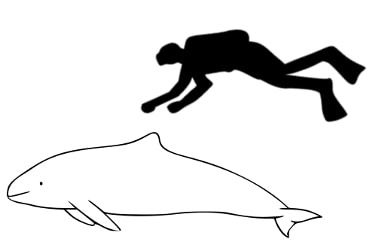
Fishers off the coast of the Netherlands got quite a shock when they caught what has now been confirmed as the first case of conjoined twin harbour porpoises (Phocoena phocoena).
With a single body and two fully grown heads, this is a case of partial twinning, or parapagus dicephalus.
The sighting is extremely rare: these male porpoises are only the 10th known case of conjoined twins in cetaceans, a group of animals that also includes whales and dolphins.
“The anatomy of cetaceans is strikingly different from terrestrial mammals with adaptations for living in the sea as a mammal. Much is unknown.
Adding any extra case to the known nine specimens brings more knowledge on this aspect.
The fishers who made the discovery returned the twins - which were probably already dead when caught - to the ocean.
They believed it would be illegal to keep such a specimen, but were able to produce a series of photographs useful for research.
The twins died shortly after birth, because their tail had not stiffened - which is necessary for newborn dolphins to be able to swim, says Kompanje.
Other signs of their age were a flat dorsal fin that should have become vertical soon after entering the ocean water, and hairs on the upper lip, which should fall out shortly after birth.
Partial twinning can happen in one of two ways: two initially separate embryonic discs can fuse together or the zygote can only partially split during the early development process.
This case concerns the second known case of twinning, the first case of conjoined twins in Phocoena phocoena, the fourth known case of parapagus dicephalus in a cetacean species and the tenth known case of conjoined twinning in a cetacean species.
Conjoined Twins: Know More- Not much is known about what causes conjoined twinning in cetaceans.
- In humans, conjoined twins are identical twins that are physically attached to each other.
- In healthy identical twins, an embryo splits into two after fertilization, but in conjoined twins, this process abruptly stops before the separation is complete.